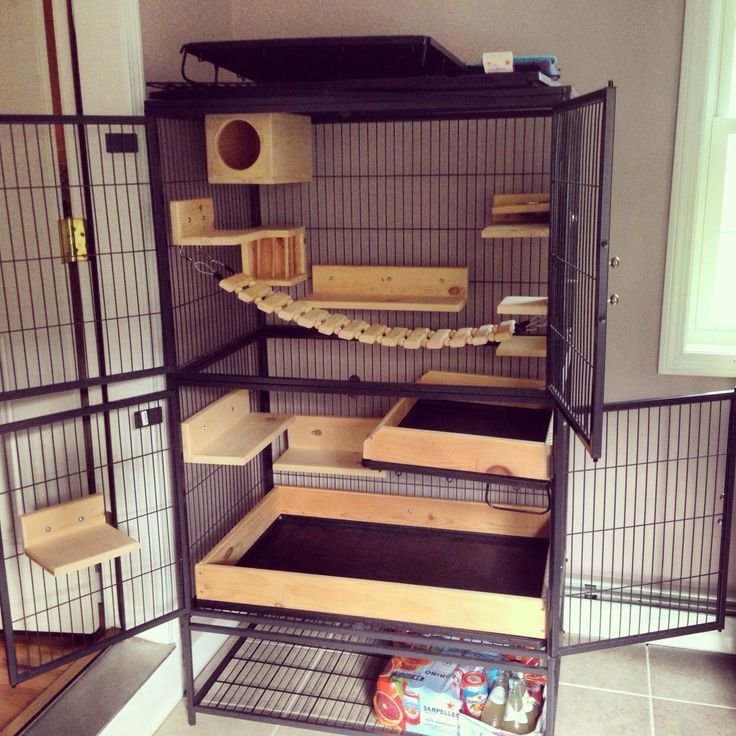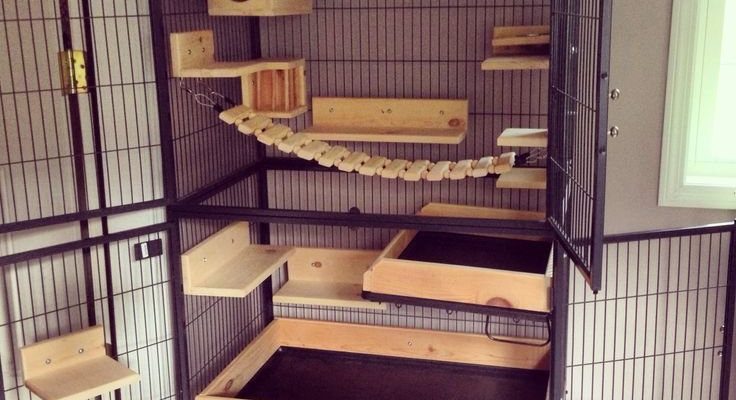
Let’s dive into the world of white mosaic chinchillas. Whether you’re a proud owner or looking to adopt one, understanding how to meet their needs is crucial. This guide will cover everything you need to know, including their dietary requirements, the best cage setups, and how to keep their luxurious coats looking fabulous. So grab a cup of coffee, and let’s chat about how to love and care for your little furball.
Understanding the Diet of a White Mosaic Chinchilla
Feeding your white mosaic chinchilla is like preparing a gourmet meal for a picky eater. They have specific dietary needs that are essential for their health. Their primary diet should consist of high-quality hay, which helps with digestion and keeps their teeth healthy. Timothy hay is a popular choice because it’s high in fiber. You might also consider other grass hays like orchard or oat hay for variety.
In addition to hay, chinchillas can enjoy small amounts of pellets and fresh fruits and vegetables. However, be cautious with these treats. Just like you wouldn’t let a toddler eat candy for breakfast, chinchillas shouldn’t make fruits and veggies a big part of their diet. Aim for about a tablespoon of pellets per day, and introduce fresh treats like small pieces of carrot or apple sparingly to avoid tummy troubles.
Here’s a quick overview of what you should include in your chin’s diet:
- High-quality hay: Timothy hay is ideal.
- Pellets: Choose those formulated specifically for chinchillas.
- Fresh treats: Offer in moderation, about a tablespoon per day.
Remember, keeping your chinchilla hydrated is equally important. Fresh water should always be available, preferably in a water bottle that prevents spills. You wouldn’t want your chinchilla slipping around in a puddle!
Setting Up the Perfect Cage for Your Chinchilla
Creating a cozy home for your white mosaic chinchilla is a bit like setting the scene for a romantic dinner—everything should be just right. First, you’ll need a spacious cage. A good rule of thumb is to aim for a cage that’s at least 24 inches wide, 24 inches deep, and 36 inches high. The more space, the better! Chinchillas are active creatures that love to hop around and explore.
It’s also important to consider the materials you use. Choose a cage made of sturdy metal, as chinchillas can chew through weaker materials like wood or plastic. For added comfort, line the bottom of the cage with paper bedding or aspen shavings—stay away from cedar or pine, as they can be harmful to their respiratory system.
Don’t forget to incorporate plenty of enrichment items! Here are some suggestions to keep your chinchilla entertained:
- Ramps and shelves: Chinchillas love to climb, so adding levels will keep them active.
- Hiding spots: Provide tunnels or houses where they can feel safe and cozy.
- Chew toys: Look for ones made of untreated wood to help keep their teeth healthy.
With the right cage setup, your chinchilla will feel right at home, allowing it to thrive and be its playful self.
The Importance of Grooming Your Chinchilla
Grooming your white mosaic chinchilla isn’t just a luxury; it’s a necessity. Their beautiful fur requires regular attention to keep it soft and healthy. Unlike dogs or cats, chinchillas don’t need baths with water. Instead, they enjoy rolling around in dust to keep their coats clean. This dust bath not only removes dirt but also prevents their fur from becoming matted.
You can buy chinchilla dust at pet stores, and it’s typically made from volcanic ash. Set up a small dish or bowl and let your chinchilla roll around in it for about 15-20 minutes a few times a week. Just like your weekly spa day!
While dust baths are essential, you should also check their fur for any signs of matting or tangles. If you notice a problem, gently use a comb to detangle it. Keep in mind, chinchillas often shed, so you might find fluffy clumps of fur in their cage. Regular grooming helps keep this shedding under control, making it easier for both you and your little friend.
Health Care Considerations for Your Chinchilla
While caring for a white mosaic chinchilla can be a joyful experience, it’s also important to be aware of their health needs. Regular vet check-ups are crucial. Look for a veterinarian who specializes in exotic pets, as they’ll know the specific needs of chinchillas.
One common issue chinchillas face is dental problems. Their teeth continuously grow, so providing chew toys can help keep them from becoming overgrown. If you notice your chinchilla dropping food or having difficulty eating, it might be time for a vet visit.
Another big concern is gastrointestinal health. Chinchillas are prone to digestive issues, so keeping an eye on their droppings is important. Healthy droppings are usually round and dry. If you notice any changes, like diarrhea or very soft poop, contact your vet right away.
A few health tips to keep in mind include:
- Regular vet visits: Aim for at least once a year.
- Watch for dental issues: Look for changes in eating habits.
- Monitor droppings: Healthy droppings are key indicators of overall health.
With proper care, your chinchilla can lead a happy, healthy life.
Socializing and Bonding with Your Chinchilla
Chinchillas are social creatures that thrive on interaction. Socializing with your white mosaic chinchilla is not just about having fun; it’s about building a strong bond. When you first bring your chinchilla home, give it some time to adjust to its new environment. This can take a few days, so be patient.
Once your chinchilla is comfortable, you can start interacting more closely. Start by sitting quietly next to its cage and allowing it to come to you. You might find that it’s curious and will eventually approach. Use treats to encourage positive interactions—just a small piece of dried fruit can do wonders!
Here’s how you can foster a strong relationship with your chinchilla:
- Spend time together: Consider letting your chinchilla out in a safe space to play.
- Use positive reinforcement: Treats can encourage good behavior and create a positive association with you.
- Be gentle: When holding your chinchilla, support its body and be calm to avoid startling it.
Building trust with your chinchilla can lead to a sweet friendship filled with plenty of fun and cuddles.
Why Chinchilla Ownership Matters
Owning a white mosaic chinchilla can be incredibly rewarding. Not only do these charming creatures bring joy to your life, but they also provide opportunities for learning and growth. Caring for a chinchilla teaches responsibility and empathy. Plus, their playful personalities and quirky habits can make each day brighter.
Ultimately, the key to a happy chinchilla is understanding its needs—diet, cage setup, grooming, and socialization. Equip yourself with knowledge, and your chinchilla will flourish in your care. By meeting these needs, you not only ensure a healthy, long life for your pet but also create a loving bond that you’ll cherish for years to come.
Remember, your chinchilla depends on you, but the joy they bring into your life is worth every effort. Whether you’re sharing a quiet moment together or watching it hop around in its cage, there’s something special about having a little furball as part of your family. So go ahead, embrace the adventure of chinchilla ownership, and enjoy every moment with your new friend!

